
Eudonia philerga is a species of moth of the family Crambidae. This species was first described by Edward Meyrick. It is endemic to New Zealand and is found throughout the country. E. philerga is regarded as being common. Larvae feed on moss and the adults have been observed on the wing more frequently from October to April. Adult moths are attracted to light.

Eudonia octophora is a species of moth of the family Crambidae. It was named by Edward Meyrick in 1884. It is endemic to New Zealand.
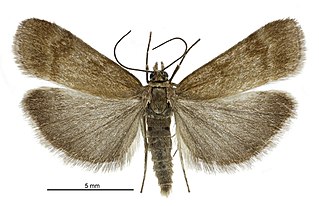
Scoparia ergatis is a species of moth in the family Crambidae. It is endemic to New Zealand.

Scoparia petrina is a species of moth in the family Crambidae. It was named by Edward Meyrick in 1884. Meyrick gave a description of the species in 1885. It is endemic to New Zealand.
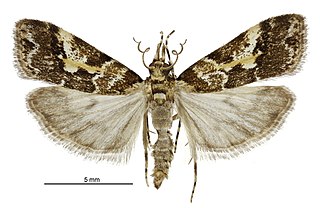
Eudonia characta is a species of moth in the family Crambidae. It was named by Edward Meyrick in 1884 and later more fully described the species. It is endemic to New Zealand.

Eudonia chlamydota is a moth in the family Crambidae. It was named by Edward Meyrick in 1884. It is endemic to New Zealand.

Eudonia critica is a moth in the family Crambidae. It was named by Edward Meyrick in 1884. It is endemic to New Zealand.

Eudonia crypsinoa is a moth in the family Crambidae. It was named by Edward Meyrick in 1884. It is endemic to New Zealand.

Eudonia cymatias is a moth in the family Crambidae. It was named by Meyrick in 1884. This species is endemic to New Zealand.
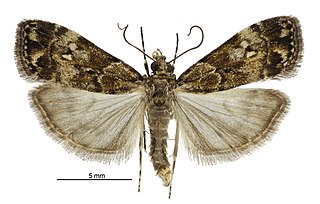
Eudonia dinodes is a moth in the family Crambidae. It was named by Edward Meyrick in 1884. This species is endemic to New Zealand.

Eudonia epicremna is a moth in the family Crambidae. It was named by Edward Meyrick in 1884. This species is endemic to New Zealand.
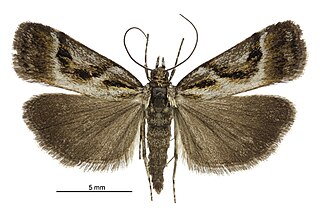
Eudonia hemicycla is a moth in the family Crambidae. It was described by Edward Meyrick in 1884. This species is endemic to New Zealand.

Eudonia legnota is a moth in the family Crambidae. This species was named by Edward Meyrick in 1884. It is endemic to New Zealand.

Eudonia leptalea is a moth in the family Crambidae. This species is endemic to New Zealand, including the Chatham Islands.

Eudonia manganeutis is a moth in the family Crambidae. It was named by Edward Meyrick in 1884. It is endemic to New Zealand.

Eudonia philetaera is a moth in the family Crambidae. It was named by Edward Meyrick in 1884. Meyrick gave a description of the adult moth in 1885. It is endemic to New Zealand.

Eudonia psammitis is a moth in the family Crambidae. It was named by Edward Meyrick in 1884. Meyrick gives a description of the species in 1885. It is endemic to New Zealand, including the Campbell Islands.

Eudonia axena is a moth in the family Crambidae. It was described by Edward Meyrick in 1884. It is endemic to New Zealand.

Eudonia deltophora is a moth in the family Crambidae. It was described by Edward Meyrick in 1884. This species is endemic to New Zealand.
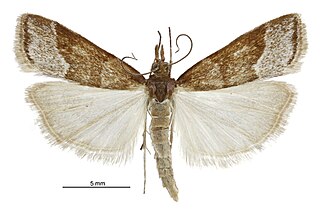
Eudonia feredayi is a moth in the family Crambidae. It was described by Henry Guard Knaggs in 1867. This species is endemic to New Zealand.






















